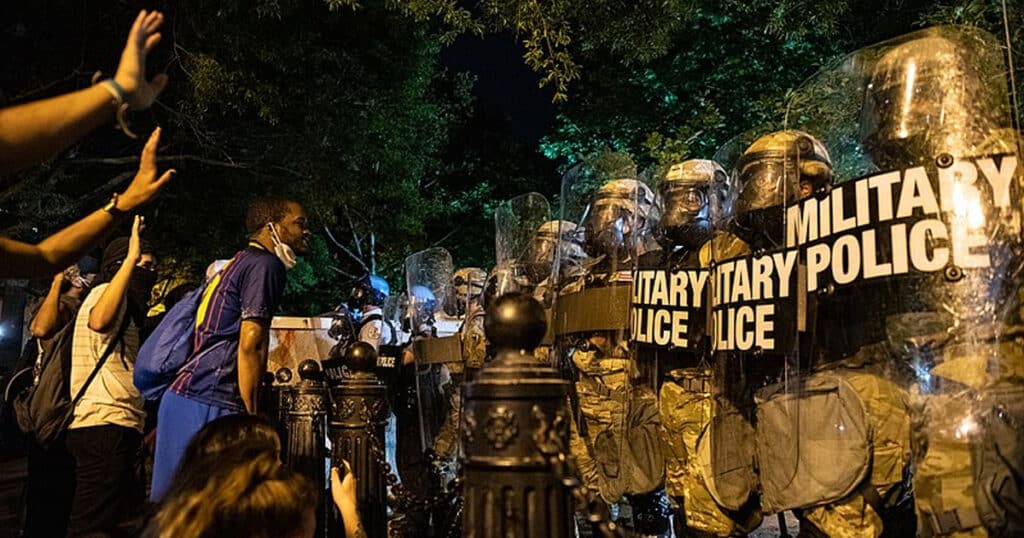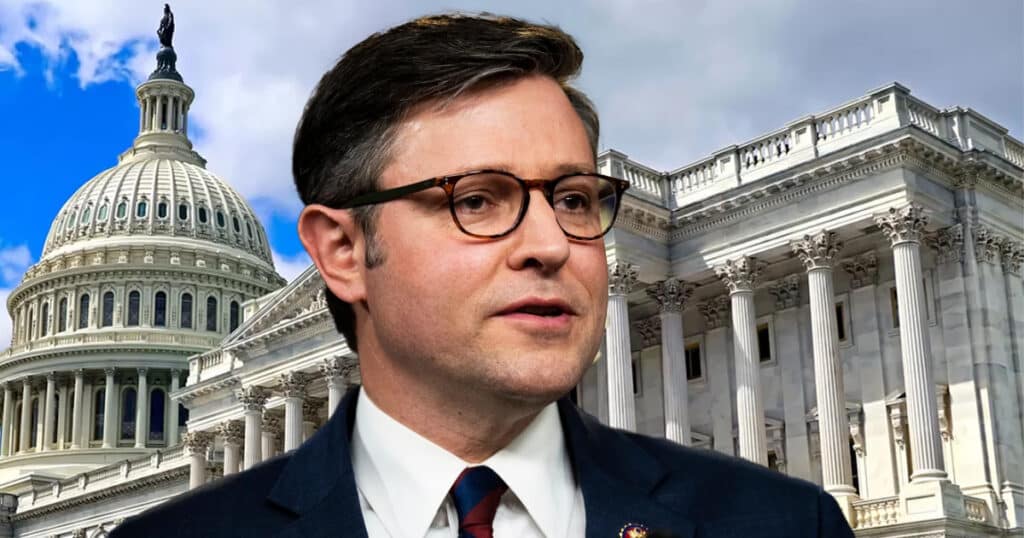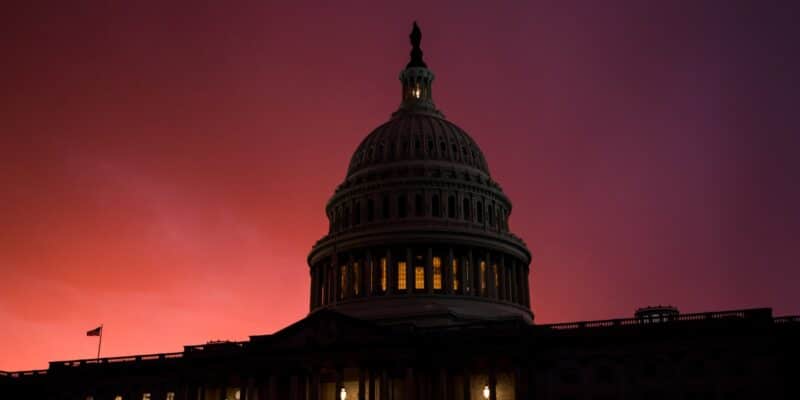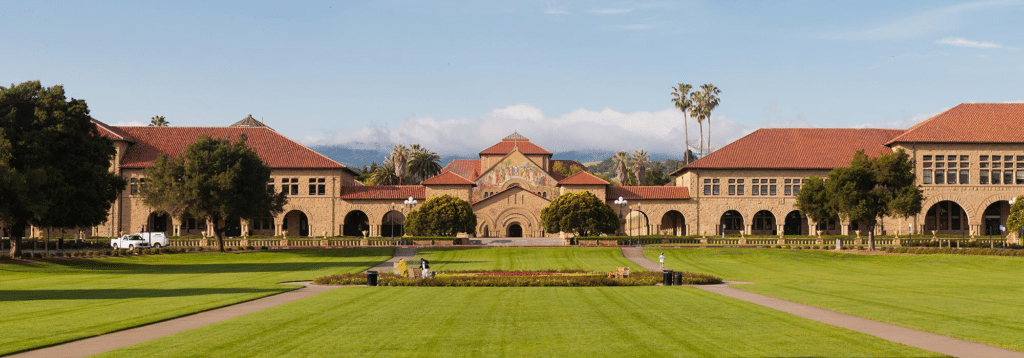
Forgotten DC Riots Did Far More Than Physical Damage to America
The three-year anniversary of the Lafayette Square and Black Lives Matter riots in the nation’s capital has come and gone without much media fanfare.
These apparently forgotten riots, and the harsher official response to the Capitol riot seven months later, say much about our media landscape and rapidly transforming legal system.
On May 29, 2020, a riot in front of the White House in Lafayette Square prompted a lockdown to protect then-President Donald Trump and the first family.
At the time, four days after George Floyd’s death in police custody in Minneapolis, many in the media portrayed the incident as Trump hiding from protesters and being real mean to them, rather than as an assault on democracy.
But it was a serious riot. Protesters tried to get inside a temporary fence protecting the White House before being stopped by police.
The situation kept getting worse. The next day, rioters set fire to part of historic St. John’s Episcopal Church, Lafayette Square, a block from the White House. Such chaos continued in the District for the next month and throughout the summer.
Damages resulting from the D.C. unrest—which were extensive—and other Black Lives Matter protests around the country ran into the billions of dollars.
Yet, the D.C. riots are mostly forgotten, even though the damage to our society went far beyond the financial and physical.
Some rioters were arrested in connection with acts of mayhem, vandalism, and violence. Did they pay a price for their actions? Not really.
“Dozens of people were arrested, including a man who jumped over two barriers in an attempt to enter the White House,” Julie Kelly wrote in American Greatness. “Yet only a handful of protesters faced federal charges—in sharp contrast to January 6 protesters who all face federal counts even for low-level offenses such as ‘parading’ in the Capitol. Nearly all the charges initially filed by the D.C. U.S. Attorney’s office were dropped.”
She noted that U.S. Attorney for the District of Columbia Matthew Graves didn’t take office until November 2021.
Graves, appointed by President Joe Biden, said at a May 16 hearing that “our office prosecutes all acts of violence, regardless of political motivation, the same.”
Yeah, right.
The Justice Department has relentlessly pursued those who were part of the Jan. 6, 2021, breach of the Capitol.
“More than 1,033 of the rioters have been arrested, with approximately 485 federal defendants receiving sentences,” Politico reported Tuesday. “About 277 defendants have been sentenced to time behind bars, and roughly 113 defendants have been sentenced to a period of home detention.”
Contrast that with the riots in front of the White House and elsewhere in D.C. in 2020.
“FBI agents worked about 16,000 more hours during the pay period of the Capitol riot of Jan. 6, 2021, than they did during the pay period of the 2020 riots that hit Washington, D.C.,” Fred Lucas reported for The Daily Signal.
The difference in treatment is stark.
“In 2020 torching a federal courthouse or massing at the White House grounds, in efforts to get at the president, earned either few arrests and little or no jail time,” conservative scholar Victor Davis Hanson wrote. “In 2021, if one entered the Capitol and illegally paraded around like a buffoon, he could get a five-year prison sentence.”
That really highlights the fundamental problem exposed by the radically different responses to civil unrest.
It’s obvious that by the standards of the legacy media, not all “insurrections” are treated equally. That’s been true for some time.
More worryingly, it seems that the judicial system and the legal profession are being radicalized and weaponized. In the name of social justice, radicals are throwing away the ideal of an adversarial system where justice is blind.
It wasn’t just the rioters in front of the White House who seemingly got off easy.
For instance, two New York lawyers firebombed an NYPD police cruiser during the 2020 BLM protests. This act of terrorism was a serious crime, regardless of who committed it. But the fact that it was committed by two lawyers, who presumably swore to uphold the Constitution, made it much worse.
And what was the result of their crime? Glowing profiles from some media outlets. The New York Times spun a sympathetic story about how the two lawyers, Colinford Mattis and Urooj Rahman, were good people who made a mistake and ruined their careers. The courts took it from there.
“The original indictment included a 40-year mandatory minimum count and Mattis and Rahman risked a punishment of life imprisonment,” Fox News reported a year ago, but federal prosecutors instead sought a 10-year sentence for the pair.
“It’s bad enough that these dangerous criminals have been allowed to sit at home for the past two years,” Patrick J. Lynch, president of New York City’s Police Benevolent Association, said at the time. “Handing them a below-guidelines sentence would give a green light to other anti-police radicals who seek to advance their cause through violence. The judge must reject this request.”
Justice Department prosecutors argued that the “history and personal characteristics” of Mattis and Rahman, and the “aberrational nature of the defendants’ conduct” warranted lighter sentences.
In the end, the two lawyers were merely disbarred and given sentences of just over a year in prison.
It’s likely that our legal system will get more biased and radical, as hard as that is to believe. Fanaticism for left-wing causes rather than adherence to basic decency and a commitment to free speech is taking over elite law schools.
It’s telling that Chesa Boudin, the district attorney who was too radical even for San Francisco, was just hired as executive director of a new research and advocacy center at the law school of University of California, Berkeley.
Soon, said constitutional lawyer Ilya Shapiro—who was ruthlessly canceled by Georgetown University—these law school students will “be occupying influential positions in state and federal government, bringing legal cases, becoming state legislators in some cases, or occupying the general counsel’s offices of Fortune 500 companies and the partnership ranks of big firms.”
The ideological weaponization of our judicial system undermines the foundation of what makes America a free country.
That’s what was truly unleashed and exposed during the riots of 2020. The physical damage was bad enough. The long-lasting damage of giving the mob a pass because it aligned with the values of our elite ruling class will be far worse.



